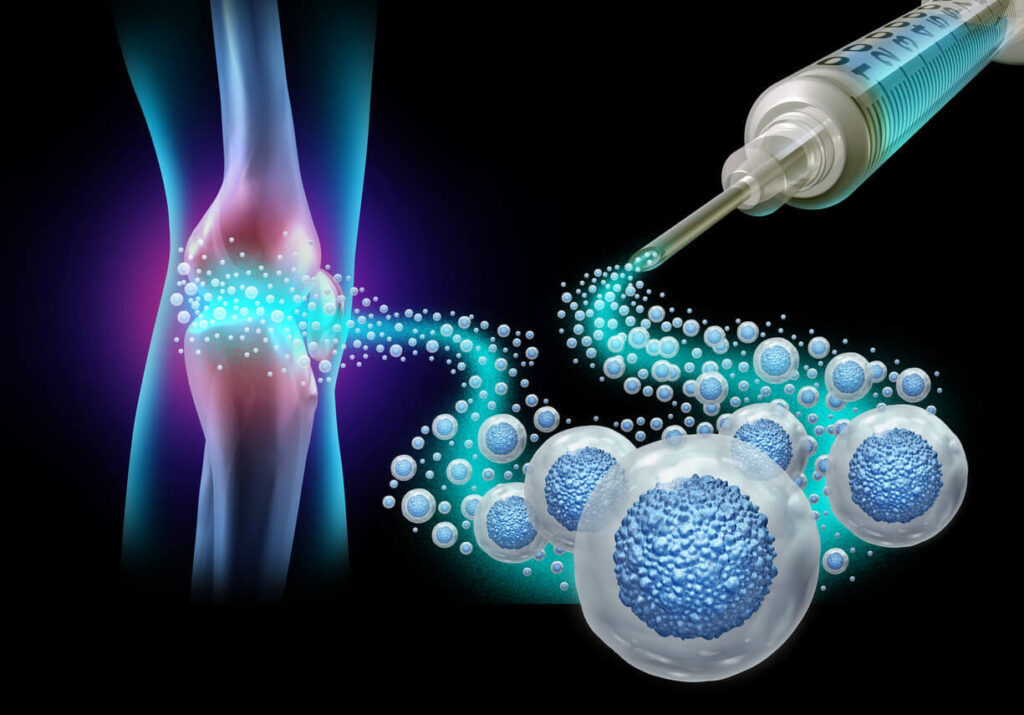
Knee pain is no longer just a problem for aging joints or athletes—it affects millions of people across age groups and lifestyles. In 2025, a revolutionary solution is gaining traction: stem cell therapy. Once considered futuristic, this regenerative treatment is now becoming mainstream in orthopedic medicine.
But is it effective? Is it safe? And is it right for you?
In this blog post, we break down everything you need to know about stem cell therapy for knee pain in 2025, including how it works, who it’s for, the risks, costs, and what the latest research says.
What Is Stem Cell Therapy?
Stem cells are the body’s raw materials—cells from which all other cells with specialized functions are generated. In therapy, stem cells are harvested (usually from bone marrow or fat tissue), processed, and injected into the knee joint to encourage tissue repair and reduce inflammation.
The goal? Regeneration instead of replacement.
Unlike traditional treatments like cortisone shots or even knee surgery, stem cell therapy aims to restore damaged cartilage and improve joint function.
How Does Stem Cell Therapy Help Knee Pain?
Stem cells have the unique ability to differentiate into various cell types—such as cartilage, bone, or ligament cells. When injected into the knee, these cells can:
-
Promote cartilage regeneration
-
Reduce inflammation and swelling
-
Slow down joint degeneration
-
Potentially delay or eliminate the need for knee replacement surgery
In 2025, with advancements in cell processing and imaging guidance, injections are more precise, and success rates are higher.
Who Is a Good Candidate?
Stem cell therapy is not a magic bullet. It works best for certain types of patients:
✅ Mild to moderate osteoarthritis
✅ Cartilage injuries
✅ Meniscus or ligament damage
✅ Active individuals seeking alternatives to surgery
✅ Those who want to avoid long recovery times
It may be less effective in people with severe bone-on-bone arthritis or those with advanced joint degeneration.
What Does the Procedure Involve?
Here’s what to expect:
-
Consultation & Imaging: Your doctor will assess your joint with MRI or ultrasound.
-
Harvesting Stem Cells: Usually from your bone marrow (hip) or adipose (fat) tissue.
-
Processing: The stem cells are isolated and concentrated in a lab.
-
Injection: Using imaging guidance, stem cells are injected into the affected area.
-
Recovery: Most patients resume light activity within 24–48 hours.
How Much Does Stem Cell Therapy Cost in 2025?
In 2025, prices vary depending on location, provider, and technique. On average:
-
United States: $4,000 – $10,000 per knee
-
Asia & Europe: May range from $2,000 – $7,000
⚠️ Note: Most insurance plans still consider it experimental and do not cover the procedure.
Risks and Side Effects
Stem cell therapy is generally considered safe when performed by trained professionals. However, like any medical procedure, it’s not risk-free:
-
Infection at the injection site
-
Pain or swelling after injection
-
No improvement or limited results
-
Overhyped claims from unlicensed clinics
⚠️ Be cautious of “stem cell tourism” or clinics that make unrealistic promises without scientific backing.
Is Stem Cell Therapy FDA Approved?
As of 2025, most stem cell therapies for orthopedic use are not FDA approved, but some clinics operate under FDA guidelines using autologous (your own) stem cells. Regulatory approval is ongoing, and clinical trials are expanding.
Always ask your provider about:
-
Clinical trial registration
-
IRB approval
-
FDA compliance
What Do Experts Say in 2025?
Recent studies and orthopedic societies indicate:
-
Improved outcomes in patients under 65 with early-stage arthritis
-
Pain reduction and mobility increase in 6–12 weeks post-injection
-
High patient satisfaction, but long-term data is still limited
Peer-reviewed journals like The American Journal of Sports Medicine continue to explore long-term effects and standardization of therapy protocols.
Stem Cell Therapy vs. Other Knee Pain Treatments
| Treatment | Invasiveness | Recovery Time | Insurance | Regenerative? |
|---|---|---|---|---|
| Cortisone Injections | Low | 1–2 days | Covered | ❌ No |
| Physical Therapy | None | Weeks–Months | Covered | ❌ No |
| Stem Cell Therapy | Moderate | 2–3 days | Not Covered | ✅ Yes |
| Knee Replacement | High | Months | Covered | ❌ No |
Final Verdict: Is It Worth It?
Stem cell therapy isn’t a miracle cure—but in 2025, it’s one of the most promising frontiers for knee pain relief without surgery. If you’re a good candidate and are working with a qualified provider, it could offer:
-
Less pain
-
Better function
-
More time before—or even avoiding—knee replacement
But as always, do your research. Ask hard questions. Don’t fall for hype.

Conclusion
As the world of regenerative medicine matures, stem cell therapy for knee pain in 2025 stands at the crossroads of science and hope. It’s a powerful option for the right patient, at the right time, with the right guidance.
Thinking about it? Talk to a doctor who specializes in regenerative orthopedic care. Ask for evidence. And walk (or jog!) into your next chapter with more clarity.
